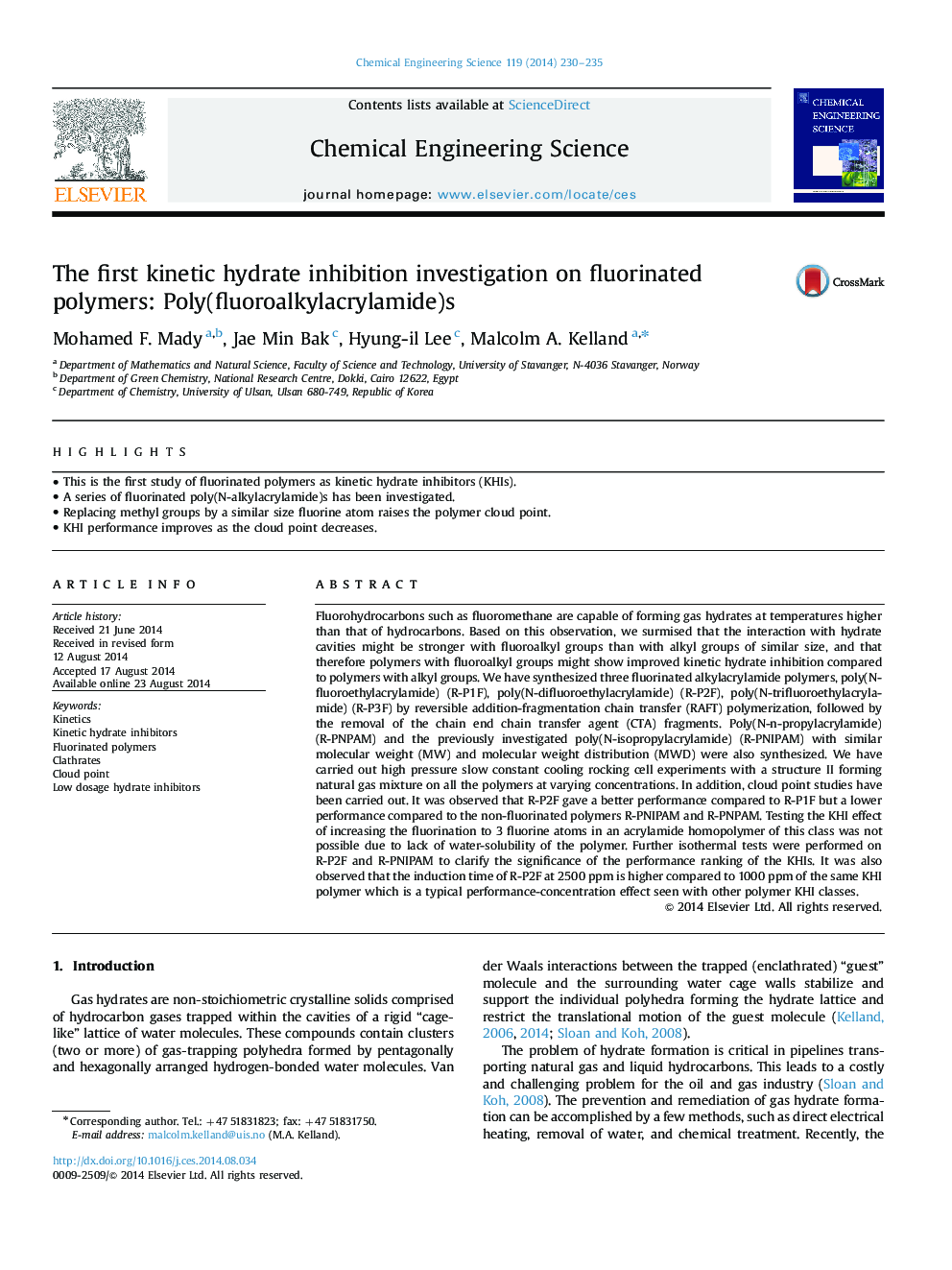| Article ID | Journal | Published Year | Pages | File Type |
|---|---|---|---|---|
| 154861 | Chemical Engineering Science | 2014 | 6 Pages |
•This is the first study of fluorinated polymers as kinetic hydrate inhibitors (KHIs).•A series of fluorinated poly(N-alkylacrylamide)s has been investigated.•Replacing methyl groups by a similar size fluorine atom raises the polymer cloud point.•KHI performance improves as the cloud point decreases.
Fluorohydrocarbons such as fluoromethane are capable of forming gas hydrates at temperatures higher than that of hydrocarbons. Based on this observation, we surmised that the interaction with hydrate cavities might be stronger with fluoroalkyl groups than with alkyl groups of similar size, and that therefore polymers with fluoroalkyl groups might show improved kinetic hydrate inhibition compared to polymers with alkyl groups. We have synthesized three fluorinated alkylacrylamide polymers, poly(N-fluoroethylacrylamide) (R-P1F), poly(N-difluoroethylacrylamide) (R-P2F), poly(N-trifluoroethylacrylamide) (R-P3F) by reversible addition-fragmentation chain transfer (RAFT) polymerization, followed by the removal of the chain end chain transfer agent (CTA) fragments. Poly(N-n-propylacrylamide) (R-PNPAM) and the previously investigated poly(N-isopropylacrylamide) (R-PNIPAM) with similar molecular weight (MW) and molecular weight distribution (MWD) were also synthesized. We have carried out high pressure slow constant cooling rocking cell experiments with a structure II forming natural gas mixture on all the polymers at varying concentrations. In addition, cloud point studies have been carried out. It was observed that R-P2F gave a better performance compared to R-P1F but a lower performance compared to the non-fluorinated polymers R-PNIPAM and R-PNPAM. Testing the KHI effect of increasing the fluorination to 3 fluorine atoms in an acrylamide homopolymer of this class was not possible due to lack of water-solubility of the polymer. Further isothermal tests were performed on R-P2F and R-PNIPAM to clarify the significance of the performance ranking of the KHIs. It was also observed that the induction time of R-P2F at 2500 ppm is higher compared to 1000 ppm of the same KHI polymer which is a typical performance-concentration effect seen with other polymer KHI classes.
